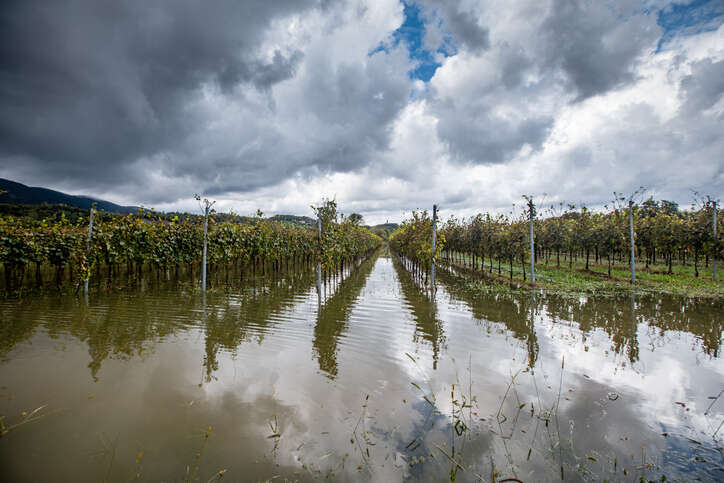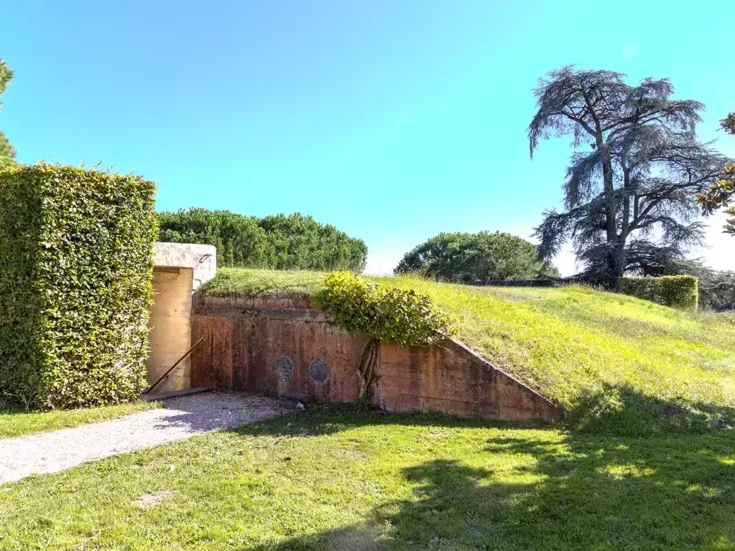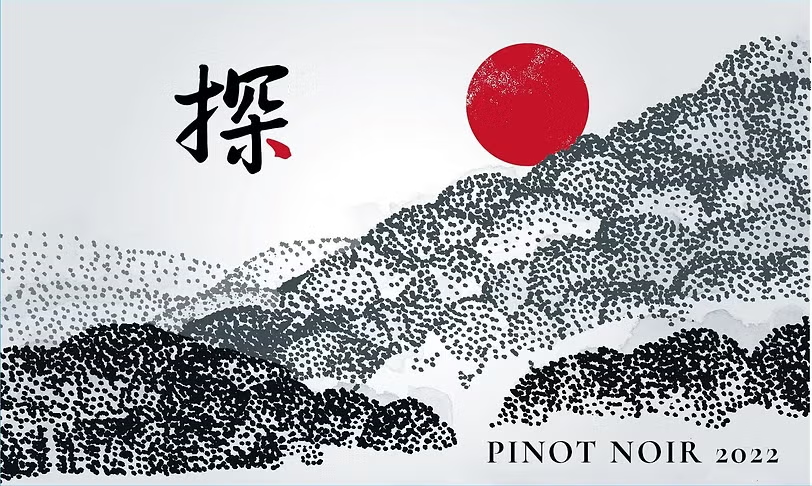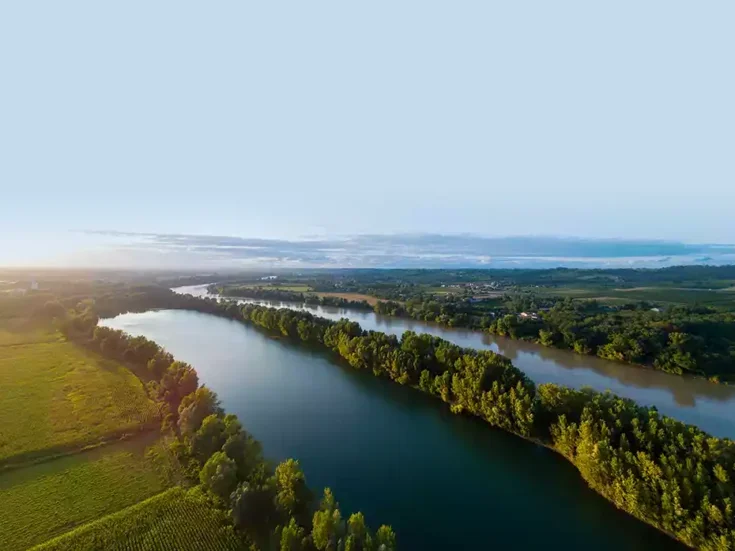
In the third installment of her ongoing series on wine and the climate crisis, Katharine Swindells examines the response to the historically small 2021 vintage, and asks how the wine world should best address the instability caused by the increasing frequency of extreme weather events.
Last year saw Europe fall back on its old, much-criticized subsidy systems, to support wine producers through the low demand of the pandemic. Now the EU has extended those same subsidies to be used for the opposite: to support producers experiencing low yields due to extreme weather events.
But, in a world made increasingly unstable by the climate crisis, when every year feels like emergency circumstances, are these systems too short-sighted?
Europe’s wine lakes
“After World War Two, food security was a priority of the European Commission, so they started subsidizing farmers,” explains Giulia Meloni, an agriculture policy and economics professor at KU Leuven and ECARES (ULB) in Belgium. “And it worked very, very well—sometimes too well. That’s how we ended up with wine lakes and butter mountains.”
Between 1995 and 2000, the average annual global wine surplus was 17.5 percent of production. And in 2004 it reached over 60 million hectoliters: a fifth of wine produced was surplus.
As Meloni says, much of this was driven by EU policies themselves—their subsidies to wine producers and commitment to distilling excess wine, encouraged overproduction. And at the same time, European wine consumption was falling. These lakes were a huge dampener on the industry, says Kym Anderson, Director of the Wine Economics Research Centre at the University of Adelaide. The oversupply and lack of market pressure on low-grade wines brought down the overall quality of European wine and, crucially, the price.
So from the mid-2000s, the EU resolved to close the gap, re-purposing the subsidy system to incentivize farmers to cut back grapes, or even to pull up their vines entirely, a process known as “grubbing up.”
And in the immediate aftermath, it worked. Between 2004 and 2012, the combined wine production of Europe’s five largest producers fell by a fifth, causing a significant dent in global supply. Spain and France in particular took advantage of these schemes, and between 2004 and 2012 both cut their annual wine production by over a quarter.
But after a few years the “grubbing up” scheme was phased out, the money was put into wine promotion and investment, and production ticked back up again.
In fact the closing of the wine lake in the past five years can be more attributed to shifting consumption than to EU policies. While France in 1995 was the world’s biggest wine consumer, since then the country’s wine consumption has fallen by over a third. But this fall has been counterbalanced by hugely growing consumption in other countries: between 1997 and 2017 the US, China and the UK’s combined wine consumption grew by almost 70 percent.
2020, the year of “unprecedented circumstances,” saw good spring and summer weather and a resultant bumper crop in the EU, with production up by 8 percent compared to 2019. At the same time, consumption dropped 3 percent globally as a result of the Covid-19 pandemic. Particularly affected were countries like Spain, who are heavily reliant on restaurant and hospitality sales and so saw a 7 percent decline in annual consumption, as well as countries who rely heavily on migrant grape pickers, who were unable to cross the borders.
Amidst fears of a return to wine lakes, the EU fell back on its old policies. Although the extra funding the organization called for by bodies such as European Confederation of Independent Winegrowers (CEVI) was not granted, explains CEVI Presiden Matilde Poggi, many governments opted to increase the support themselves, and the EU wine sector support was given much more flexibility. The funding was quickly repurposed for crisis distillation: in France, over 2 million hectoliters were bought to be turned into ethanol or alcoholic hand gel, with wine producers paid €58 - €78 per hectoliter by Brussels.
Growing instability
But early data of the 2021 harvest shows the reverse problem. Wine production has always been volatile, but for some parts of Europe this year’s weather was unexpectedly brutal—with floods, frosts and mildew causing huge, unforeseen damage to harvests.
Read More: Early Pickings? Climate change and harvest dates
Germany’s July flash floods destroyed many wineries and vineyards in the Ahr Valley region, and local producers are auctioning off their ruined “flood wine” to raise funds for their survival.
In France, the 2021 harvest is estimated to be the lowest on record, the result of a destructive spring frost similar to those seen in 2017 and 1991.
Across France, wine production is a third below its average level this year, and in Bourgogne-Beaujolais, Champagne, and France’s Southwest, it’s estimated that almost half their average harvest was lost. In Languedoc-Roussillon, France’s largest wine-producing region, 2021’s harvest was almost 3.5 million hectoliters lower than average.
This autumn, the EU announced an extension of the flexibility and support measures granted during the pandemic, to cover the effects of 2021’s extreme weather.
National governments have also been providing support to their growers: in April, the French Prime Minister announced almost €1 billion in financial support to wine growers affected by the devastating frost.
But is this system sustainable in the long term? Analysis in the recent IPCC report found that extreme heat, which used to happen only once a decade, is now happening three times a decade, and by 2100 could be happening once a year. Heavy rain, which is currently seen just over once a decade, could also triple in frequency.
When every year could see harvests boomerang by millions of hectoliters, and a few days of extreme weather could mean a year’s work is destroyed, how can governments help their wine producers find stability?
Many point to insurance as an option, but analysis by the French Ministry of Agriculture found that even though insurance is subsidized, less than a fifth of French wine producers are insured, amounting to only an eighth of the country’s total vineyard.
The cost is the problem, says CEVI president Poggi, and if the EU makes insuring vines against bad weather mandatory, the expensive premiums won’t be viable for many independent winegrowers.
Americans seem to be more open to insuring their crops: When wildfires hit the West Coast in 2020, 77 percent of California winegrape growers had coverage. But further up the coast in Oregon, where many vineyards were damaged by smoke exposure, just 32 percent of grape growers had crop insurance. And those with insurance are now finding their premiums rising year on year, sometimes even doubling according to the San Francisco Chronicle. Some insurers now refuse to cover fire damage at all.
There are arguments too for storing surplus wine to be used in blends in later years, which would even out the inconsistent yields and quality of grapes. While this is already standard practice in Champagne in order to maintain their characteristic blend from year to year, in still wines, blending across multiple vintages is still very unusual.
As year-to-year harvests become more variable, we may see wine producers explore storage options and the multi-vintage trend. But with regions seeing yields vary by millions of hectoliters, storage remains an unlikely option to meet the capacity of the global wine demand.
Some, such as Anderson from the Wine Economics Research Centre, argue that wine has always been an unstable industry, and those who can’t withstand the pressure would be better to cut their losses and leave.
“Going forward this will be the new normal, climate change is going to cause these sorts of disruptions somewhere in the world every year,” says Anderson. “Agricultural producers can't expect to be bailed out by the taxpayer every time. You're in a risky industry, and it's going to become more risky over time. Growers are just going to have to learn to be more resilient,or get out of the industry.”
But this, says Poggi, overlooks the significant role that wine plays in local economies, and its cultural significance.
“Independent winegrowers play a key role in many rural areas, and have a positive impact on the local dynamism and economy, maintaining activity and employment opportunities in rural areas,” says Poggi. “Moreover, wine is a cultural heritage in many European regions, and it is crucial to preserve our know-how and our tradition.”
Poggi argues that, alongside short-term support, investment in research and technological solutions is crucial, to discover and share best practices for resilience in wine production.
Meloni of KU Leuven agrees—that investment in modification of seeds, and experimentation in moving grape varieties to different regions, could be crucial to providing more stability to the industry.
“Long term, investing in research and innovation at EU level is one of the most important things,” Meloni says. “Some regulations can limit innovation, which the EU Commission and policymakers need to encourage.”
Ultimately, Meloni says, Europe’s wine world may need to soften their dedication to tradition and regimen, if they’re going to survive.






